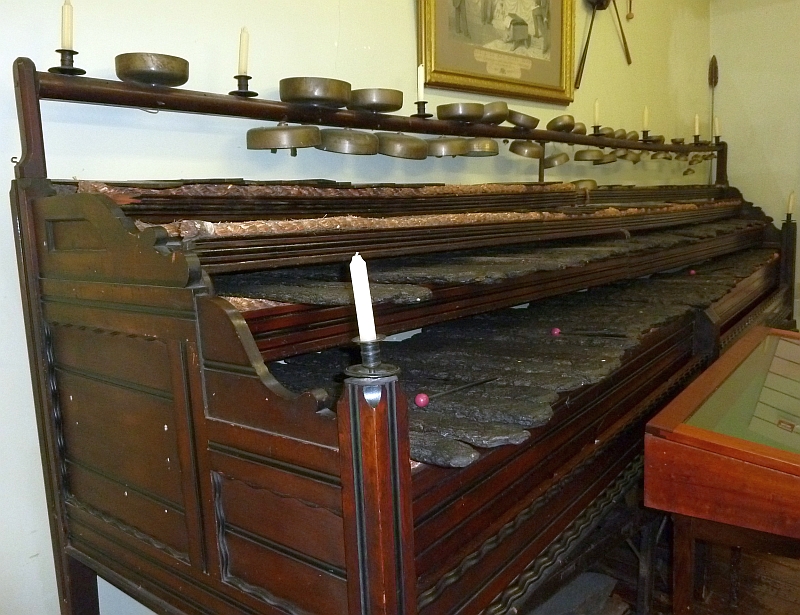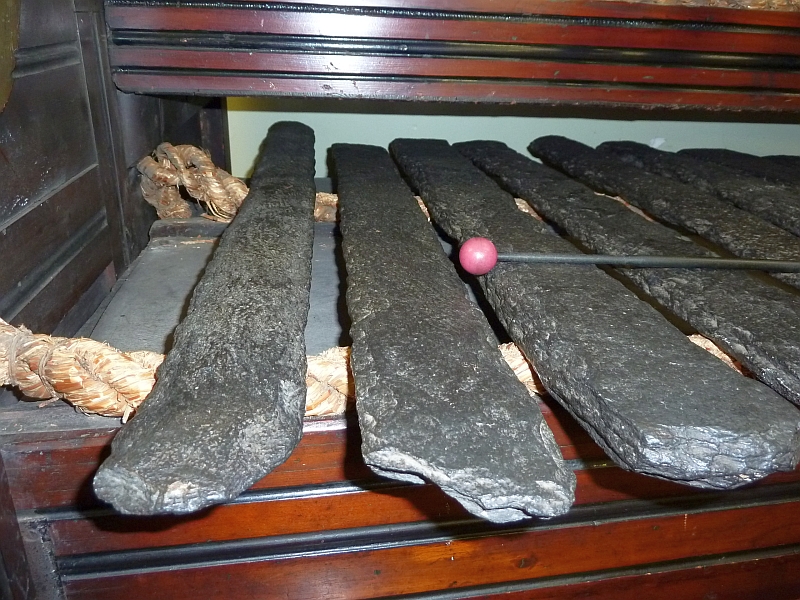| The swaag.org website uses cookies to provide website use and other information. Full details | Swaledale and
Arkengarthdale Archaeology Group Swaledale Geology Pages © John Russell |
SWAAG Honorary President:
Tim Laurie FSA |
The photo shows a Lithophone made of shiny, black and very hard
rock taken from Blencathra on Skiddaw. Each note of the
Lithophone is carved out of a single piece of rock called
Hornfels, a metamorphic rock.
Metamorphic rocks make up only 2% of the earth’s crust. Metamorphic rocks are formed by heat and pressure. When continents collide sedimentary rocks are put under great heat and pressure. This is called regional metamorphism. The clays and silts of Skiddaw were squashed into slates when two halves of our country joined at the end of the Silurian Period. Granites were injected into the crustal junction causing contact metamorphism. The rock surrounding the granite was baked at 600-700 degrees centigrade. Rings of metamorphic rock change, called Aureoles, surrounded the granite, with the lowest temperature rocks furthest from the granite. The highest grade rock (Hornfels) was closest to the granite. The original slate, closest to the granite, was baked at very high temperatures for about a million years. The slate structure and crystals were completely destroyed in the baking process. The Hornfels that formed were made out of small, interlocking uniform crystals. The texture of this new rock is described as granoblastic. It is likely that the uniform crystal texture gives the rock it’s ”ringing” sound when the rock is struck with a hammer. Lithophones of Hornfels took a long time to construct because the Hornfels were so hard and difficult to work. The Keswick Lithophone stones took over six months to cut and tune.
This instrument can be seen in action in a British Pathe newsreel from 31/12/1936
Also see the Neddy Dick webpage. Neddy was a well known character that had his own set of lithophonic stones from the River Swale. |


